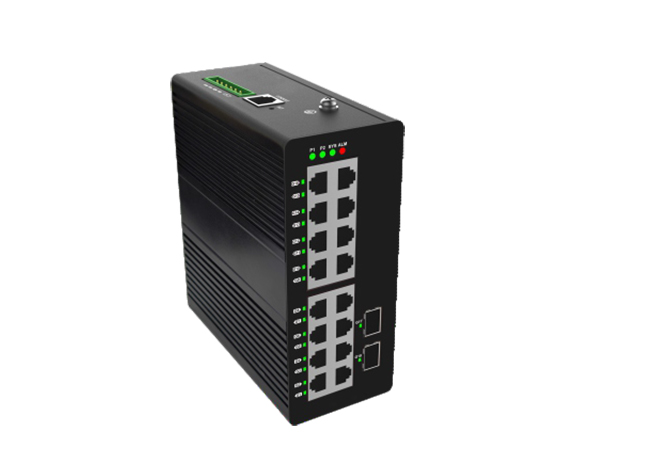In recent years, with the rapid development of enterprise data communication services and related converged services, Ethernet switches, as indispensable critical equipment, have not only been greatly improved in quantity, but also improved in performance. Enterprise information applications are moving towards broadband and integration in an all-round way. Under this background, the traditional Ethernet switch that realizes simple connection and data transmission functions has become a thing of the past. Looking at the current overall development trend, we find that the Ethernet switch is moving towards high-speed and intelligent direction.
1. Transmission rate: gigabit switches become mainstream, and the market of 10 gigabit switches rises rapidly
Due to the maturity of 1000M chip technology, the international mainstream chip suppliers rarely provide 100M switching chips, making the cost of 1000M switches and 100M switches almost the same. Therefore, 100M switches in the market have shown a rapid downward trend, and 1000M switches have become the basic configuration of the enterprise network access layer.
According to incomplete statistics, gigabit Ethernet switch, intelligent switch and 10 gigabit Ethernet switch have become the three categories that domestic users pay most attention to. Among them, Gigabit Ethernet switches accounted for 36.2%, intelligent switches accounted for 19.4%, and 10 Gigabit Ethernet switches accounted for 15.1%. It can be seen that while gigabit Ethernet switches have become mainstream configurations, users pay more attention to intelligent switches with simplified functions and easy use.

2. Working protocol layers: Layer 2 Ethernet switch and layer 3 Ethernet switch are mainstream
At present, there are more and more applications of data, voice and video in the enterprise network, and the network needs to ensure the priority transmission of important applications according to the characteristics of different applications. Therefore, the use of differences in working protocols to achieve the isolation of application areas has become the focus of users when selecting Ethernet switch products. The switches can be divided into Layer 2, Layer 3, Layer 4 and Layer 7 switches according to different working protocol layers.
According to the statistical results, China's Ethernet switch market is still dominated by Layer 2 switches working in the Layer 2 data link layer, accounting for 58%. The Layer 3 switch, which supports a certain IP layer packet processing capacity, has also received much attention, accounting for 40%. However, due to its professional positioning and high price, the Layer 4 switch with higher level applications only accounts for 2%, which is still a high-end niche product.
3. Port structure: modular switches grow slightly, and stackable switches attract attention
With the increasing diversification of business requirements and operating environments, switches with fixed interfaces are gradually unable to meet the requirements of industry development. However, modular switches are gradually attracting more users' attention due to their customized services and flexible expansion, but their prices are more expensive than those of fixed port switches.
The ports of the modular switch can be installed with different daughter boards according to the needs, which makes the selection more flexible. High end switches are generally modular, and the host itself has a large switching bandwidth. You can choose to install many types of interfaces, such as 48 port, 96 port 100M, gigabit electrical interface or optical interface, as required.
At the same time, the stackable switch has become the absolute mainstream in the Chinese switch market due to its high cost performance ratio, good scalability, easy management and easy deployment, and the proportion of attention is up to 85%.
Stackable switch refers to the network switch with "stacking" function, which is a network device. The so-called stack is to connect two or more switches through the stack port of the switch with a dedicated connection cable to expand the number of ports of a single switch.
When multiple switches are stacked together, they act like a modular switch and can be managed as a unit device, that is, all switches in the stack can be logically regarded as one switch. Generally, there should be at least one manageable switch in the stacked switches, and the manageable switches can be used to manage other stacked switches. Stackable switches are very convenient for network expansion, and are the most ideal choice for new networks.
In the future, at the protocol level, Ethernet switches based on Layer 2/Layer 3 protocols will not only remain the focus of the market, but also become the protagonist in promoting sales revenue. With the strong demand of enterprises in networking support, data center workload, and service providers in infrastructure diversification, for switches with large capacity, high speed, multi service capabilities, and stability and reliability, it is bound to promote the steady development of the future Ethernet switch market.
Contact: sales
Phone: 18688787693
E-mail: sales@hsindustrialswitch.com
Add: Room 608, Building B,GaoXinQi TEC Park,Baoan District, ShenZhen,China